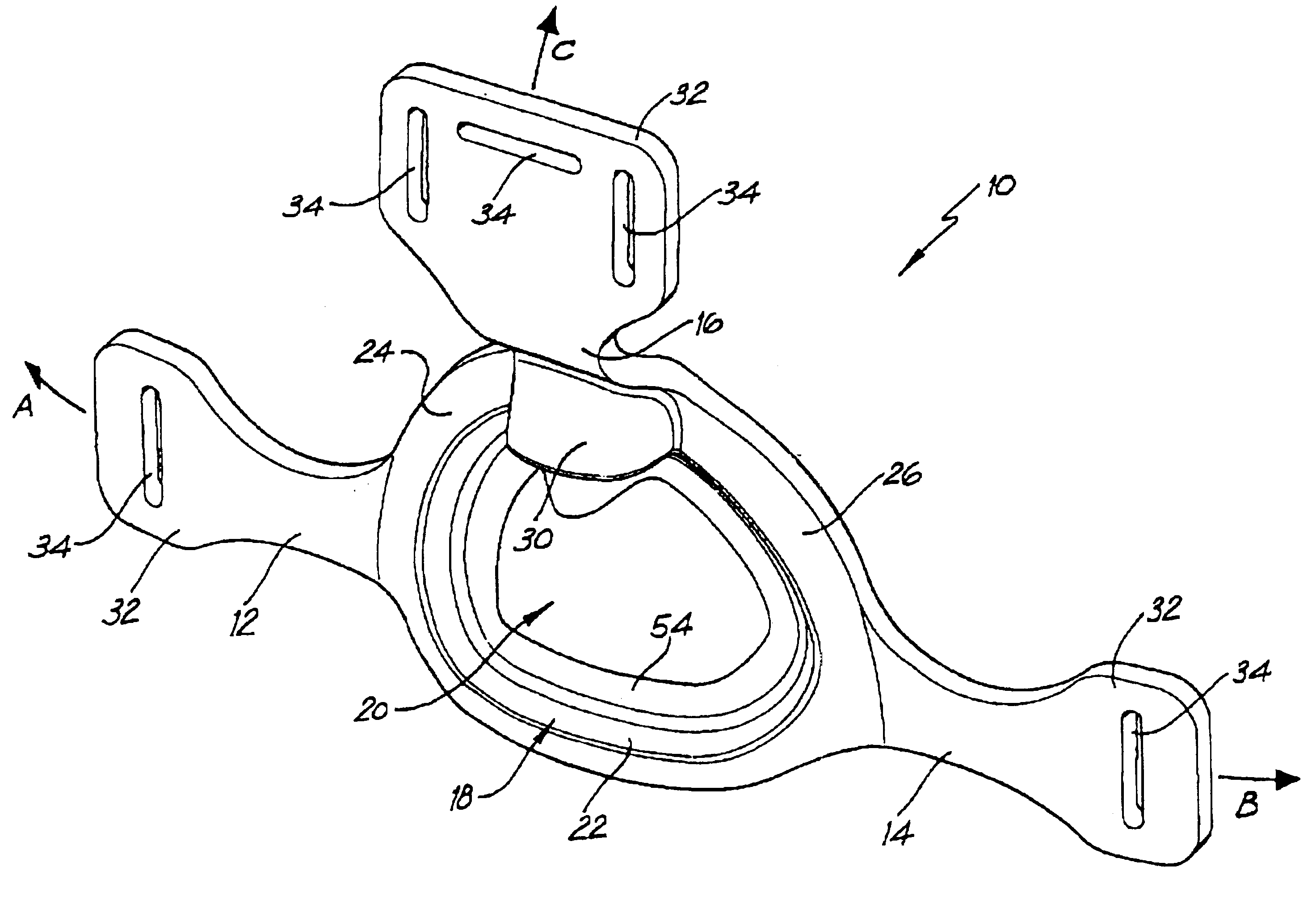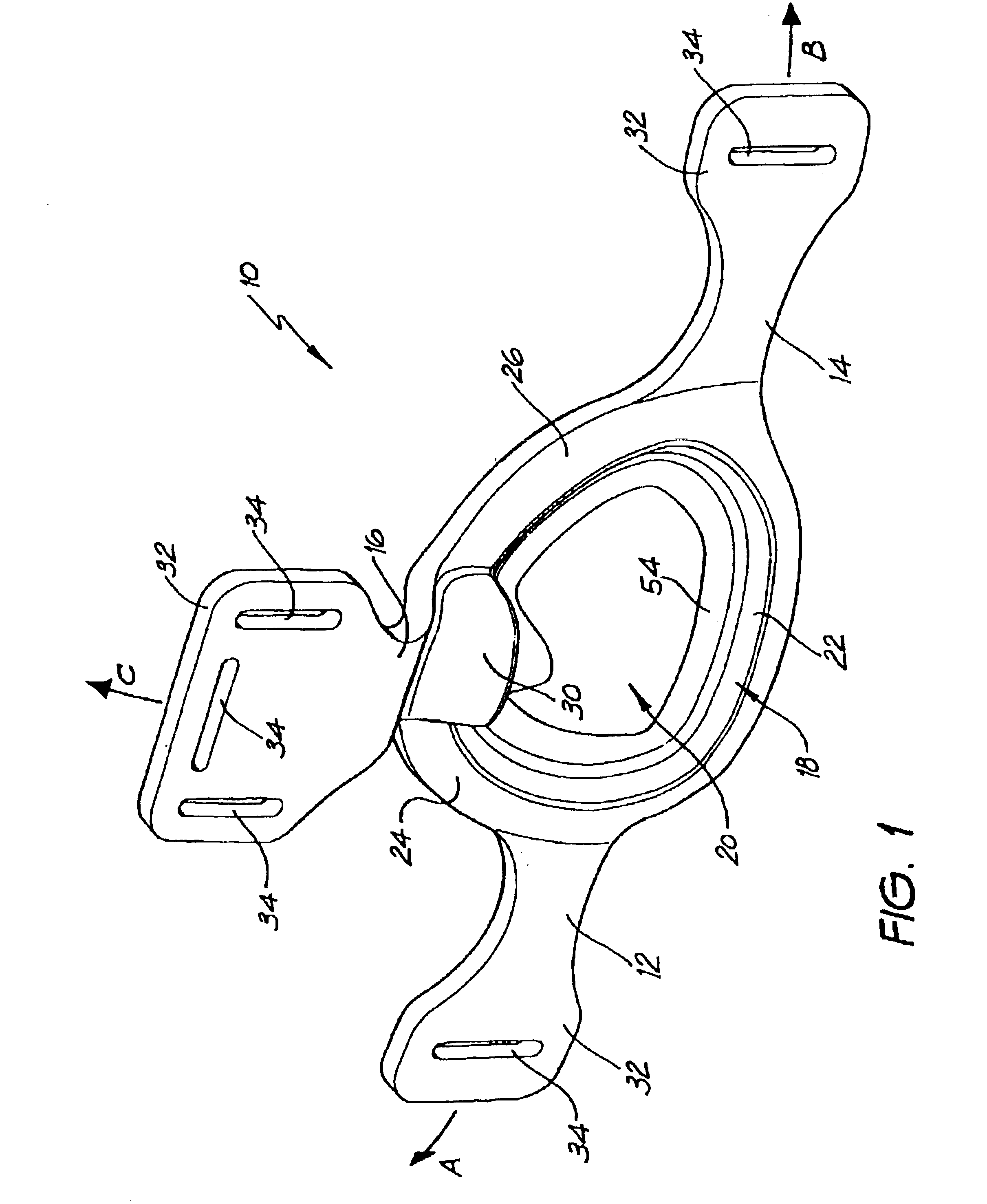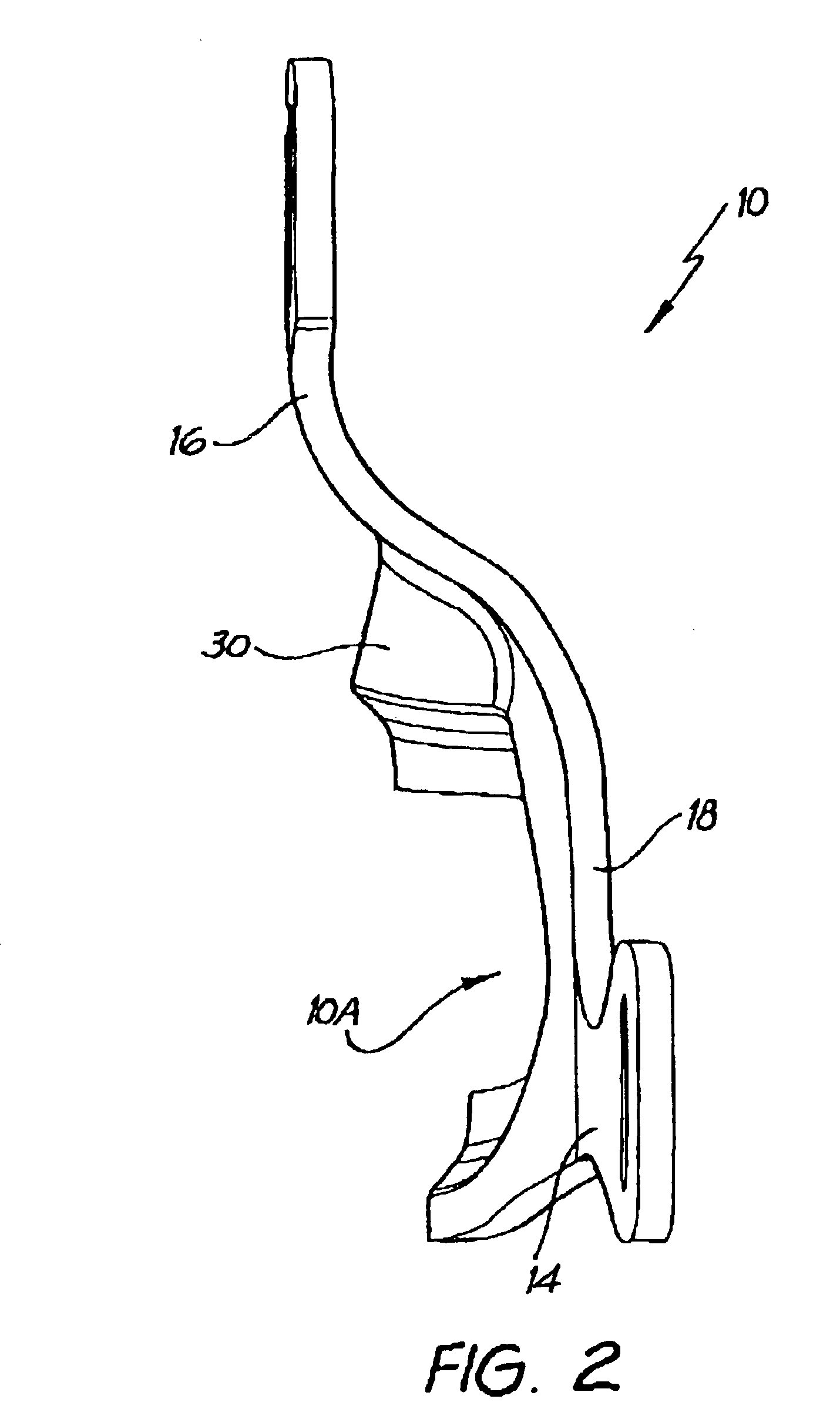Nasal mask with integral mouldable straps
a technology of nasal mask and strap, which is applied in the field of nasal mask, can solve the problems of undesirable leakage, leakage may also be irritating, and interrupt the patient's sleep, and achieve the effect of simple and cheaper manufacture of nasal masks, and high tear resistance silicone elastomers
- Summary
- Abstract
- Description
- Claims
- Application Information
AI Technical Summary
Benefits of technology
Problems solved by technology
Method used
Image
Examples
Embodiment Construction
[0063]Referring to the drawings, FIG. 1 shows a part 10 of a mask. The mask includes three straps, 12, 14, 16 which are integrally moulded with a generally triangular face engaging portion or perimeter 18 enclosing a generally triangular aperture 20. The straps can be considered to be an extension of members defining the perimeter as the straps 12, 14, 16 are integrally formed and connected via the perimeter. Thus straps 12 and 14 are connected via perimeter member 22, and pulling on the ends of straps 12 and 14 also stretches perimeter member 22. Likewise, straps 12 and 16 are integrally formed and connected by perimeter member 24, and straps 16 and 14 by perimeter member 26. The perimeter 18 is integrally formed with the straps from a flexible stretchable elastomeric material (such as Silastic or Santoprene) and when the straps are stretched in a direction as shown by the arrows A, B and C, then the face engaging portion perimeter stretches also and the aperture 20 enlarges slight...
PUM
 Login to View More
Login to View More Abstract
Description
Claims
Application Information
 Login to View More
Login to View More - R&D
- Intellectual Property
- Life Sciences
- Materials
- Tech Scout
- Unparalleled Data Quality
- Higher Quality Content
- 60% Fewer Hallucinations
Browse by: Latest US Patents, China's latest patents, Technical Efficacy Thesaurus, Application Domain, Technology Topic, Popular Technical Reports.
© 2025 PatSnap. All rights reserved.Legal|Privacy policy|Modern Slavery Act Transparency Statement|Sitemap|About US| Contact US: help@patsnap.com



